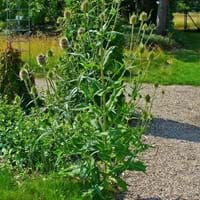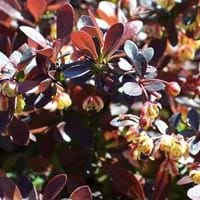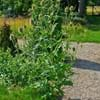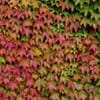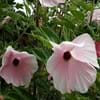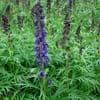Life Span
Biennial
Perennial
Type
Flowering Plants, Herbs
Shrub
Origin
Europe, Asia
Japan
Types
Not Available
not available
Habitat
Rocky areas, Semi desert, Subtropical climates
All sorts of environments
USDA Hardiness Zone
5-8
4-8
Sunset Zone
21,22
A3, 2b, 3a, 3b, 4, 5, 6, 7, 8, 9, 10, 11, 12, 13, 14, 15, 16, 17, 18, 19, 20, 21, 22, 23, 24
Habit
Upright/Erect
Oval or Rounded
Flower Color
Purple
Yellow, Yellow green
Flower Color Modifier
Bicolor
Not Available
Fruit Color
Non Fruiting Plant
Red
Leaf Color in Spring
Green
Crimson, Dark Red
Leaf Color in Summer
Green
Dark Red, Bronze
Leaf Color in Fall
Green
Red, Dark Red, Bronze
Leaf Color in Winter
Light Green
Not Available
Leaf Shape
Ovate
Acuminate
Plant Season
Summer, Fall, Winter
Spring, Summer, Fall, Winter
Sunlight
Full Sun
Full Sun, Partial Sun
Growth Rate
Very Fast
Slow
Type of Soil
Clay, Loam
Clay, Loam, Sand
The pH of Soil
Acidic, Neutral, Alkaline
Acidic, Neutral, Alkaline
Soil Drainage
Average
Average
Bloom Time
Summer, Late Summer
Spring, Late Spring
Tolerances
Not Available
Pollution, Drought, Salt, Soil Compaction
Where to Plant?
Ground, Pot
Ground, Pot
How to Plant?
Seedlings, Stem Planting
Cuttings
Plant Maintenance
Medium
Medium
Watering Requirements
Average Water Needs
Average Water Needs
In Summer
Lots of watering
Lots of watering
In Spring
Moderate
Moderate
In Winter
Average Water
Average Water
Soil pH
Acidic, Neutral, Alkaline
Acidic, Neutral, Alkaline
Soil Type
Clay, Loam
Clay, Loam, Sand
Soil Drainage Capacity
Average
Average
Sun Exposure
Full Sun
Full Sun, Partial Sun
Pruning
Remove damaged leaves, Remove dead branches, Remove dead leaves, Requires very little pruning
Prune if you want to improve plant shape, Remove damaged leaves, Remove dead branches, Remove dead leaves
Fertilizers
All-Purpose Liquid Fertilizer
All-Purpose Liquid Fertilizer
Pests and Diseases
Pests and diseases free
Free of serious pests and diseases
Plant Tolerance
Drought
Drought, Pollution
Flowers
Showy
Insignificant
Flower Petal Number
Single
Single
Foliage Texture
Coarse
Medium
Foliage Sheen
Glossy
Glossy
Allergy
Skin irritation
Unknown
Aesthetic Uses
Showy Purposes
along a porch, deck or patio, Borders, Cottage Garden, Informal Hedge, Ornamental use
Beauty Benefits
Not Available
Not Available
Environmental Uses
Air purification
Air purification
Medicinal Uses
No Medicinal Use
No Medicinal Use
Part of Plant Used
Flowers
Not Available
Other Uses
Dried heads are used in floristry, Used as Ornamental plant
Showy Purposes
Used As Indoor Plant
No
No
Used As Outdoor Plant
Yes
Yes
Garden Design
Wildflower
Container, Edging, Foundation, Hedges, Mixed Border, Rock Garden, Wall
Botanical Name
DIPSACUS fullonum
BERBERIS thunbergii f. atropurpurea 'Crimson Pygmy'
Common Name
Fuller's Teasel
Japanese Burberry
In Hindi
Fuller's Teasel
crimson pygmy
In German
Fullers Karde
crimson pygmy
In French
Cardère à foulon
crimson pygmy
In Spanish
Cardo de Fuller
crimson pygmy
In Greek
Νεράγκαθο του Fuller
crimson pygmy
In Portuguese
Carda de Fuller
crimson pygmy
In Polish
Fullera Oset
crimson pygmy
In Latin
Teasel Fullonis
crimson pygmy
Phylum
Anthophyta
Magnoliophyta
Class
Magnoliopsida
Magnoliopsida
Order
Dipsacales
Ranunculales
Family
Dipsacaceae
Berberidaceae
Clade
Angiosperms, Asterids, Eudicots
Angiosperms, Eudicots
Tribe
Not Available
Not Available
Subfamily
Dipsacoideae
Not Available
Number of Species
Not Available
Properties of Fuller's Teasel and Crimson Pygmy
Wondering what are the properties of Fuller's Teasel and Crimson Pygmy? We provide you with everything About Fuller's Teasel and Crimson Pygmy. Fuller's Teasel has thorns and Crimson Pygmy doesn't have thorns. Also Fuller's Teasel does not have fragrant flowers. Fuller's Teasel has allergic reactions like Skin irritation and Crimson Pygmy has allergic reactions like Skin irritation. Compare all the properties and characteristics of these two plants. Find out which of these plant can be used as indoor plant. If you are interested to decorate your house and garden, find out aesthetic uses, compare them and select the plant which will beautify your surrounding. Along with beautification, try comparing medicinal and edible uses of Fuller's Teasel and Crimson Pygmy and you can choose the plant having best and most benefits.
Season and Care of Fuller's Teasel and Crimson Pygmy
Season and care of Fuller's Teasel and Crimson Pygmy is important to know. While considering everything about Fuller's Teasel and Crimson Pygmy Care, growing season is an essential factor. Fuller's Teasel season is Summer, Fall and Winter and Crimson Pygmy season is Summer, Fall and Winter. The type of soil for Fuller's Teasel is Clay, Loam and for Crimson Pygmy is Clay, Loam, Sand while the PH of soil for Fuller's Teasel is Acidic, Neutral, Alkaline and for Crimson Pygmy is Acidic, Neutral, Alkaline.
Fuller's Teasel and Crimson Pygmy Physical Information
Fuller's Teasel and Crimson Pygmy physical information is very important for comparison. Fuller's Teasel height is 150.00 cm and width 30.00 cm whereas Crimson Pygmy height is 45.70 cm and width 61.00 cm. The color specification of Fuller's Teasel and Crimson Pygmy are as follows:
Fuller's Teasel flower color: Purple
Fuller's Teasel leaf color: Green
Crimson Pygmy flower color: Yellow and Yellow green
- Crimson Pygmy leaf color: Crimson and Dark Red
Care of Fuller's Teasel and Crimson Pygmy
Care of Fuller's Teasel and Crimson Pygmy include pruning, fertilizers, watering etc. Fuller's Teasel pruning is done Remove damaged leaves, Remove dead branches, Remove dead leaves and Requires very little pruning and Crimson Pygmy pruning is done Prune if you want to improve plant shape, Remove damaged leaves, Remove dead branches and Remove dead leaves. In summer Fuller's Teasel needs Lots of watering and in winter, it needs Average Water. Whereas, in summer Crimson Pygmy needs Lots of watering and in winter, it needs Average Water.
